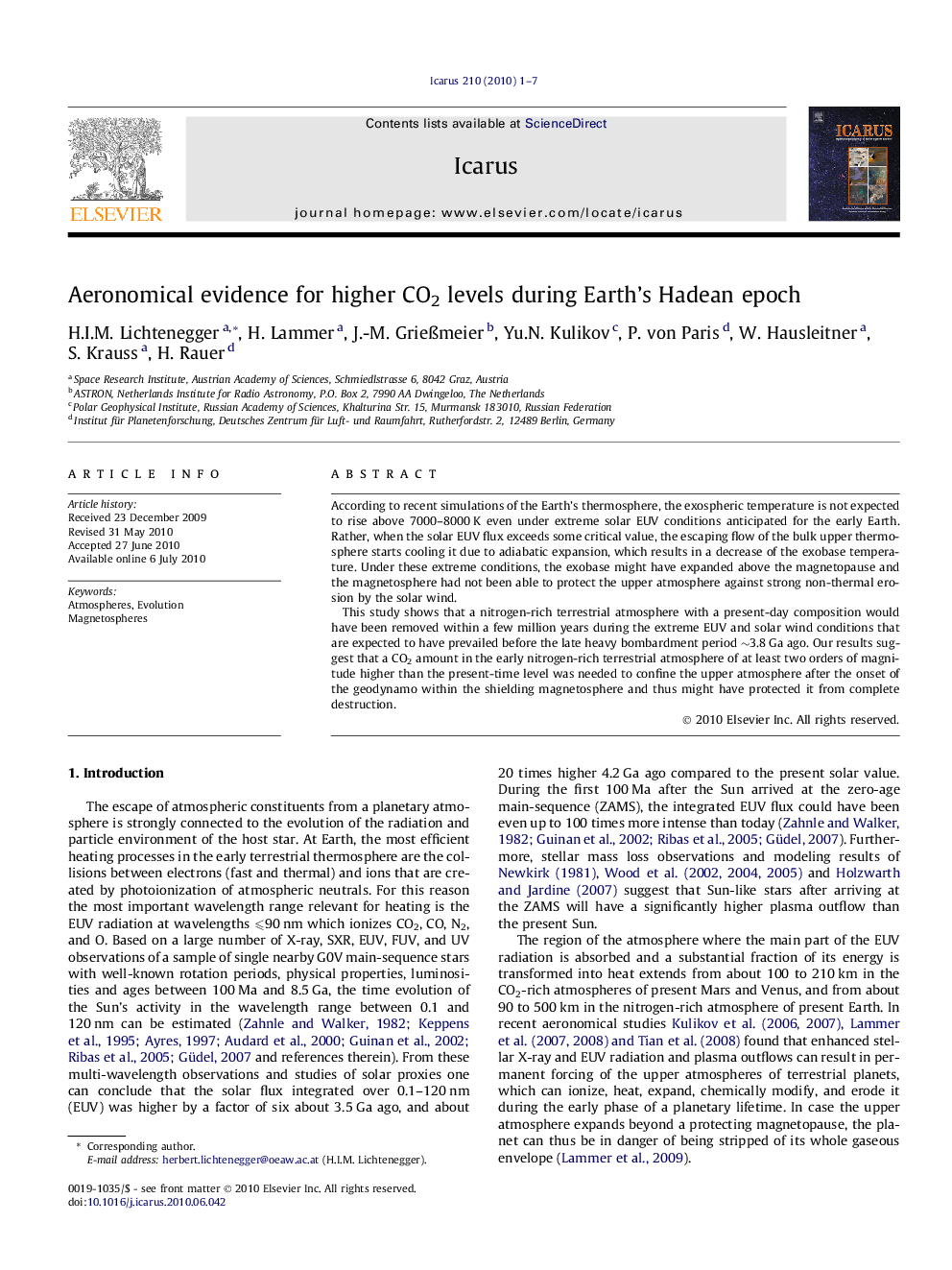| Article ID | Journal | Published Year | Pages | File Type |
|---|---|---|---|---|
| 1774139 | Icarus | 2010 | 7 Pages |
According to recent simulations of the Earth’s thermosphere, the exospheric temperature is not expected to rise above 7000–8000 K even under extreme solar EUV conditions anticipated for the early Earth. Rather, when the solar EUV flux exceeds some critical value, the escaping flow of the bulk upper thermosphere starts cooling it due to adiabatic expansion, which results in a decrease of the exobase temperature. Under these extreme conditions, the exobase might have expanded above the magnetopause and the magnetosphere had not been able to protect the upper atmosphere against strong non-thermal erosion by the solar wind.This study shows that a nitrogen-rich terrestrial atmosphere with a present-day composition would have been removed within a few million years during the extreme EUV and solar wind conditions that are expected to have prevailed before the late heavy bombardment period ∼3.8 Ga ago. Our results suggest that a CO2 amount in the early nitrogen-rich terrestrial atmosphere of at least two orders of magnitude higher than the present-time level was needed to confine the upper atmosphere after the onset of the geodynamo within the shielding magnetosphere and thus might have protected it from complete destruction.
